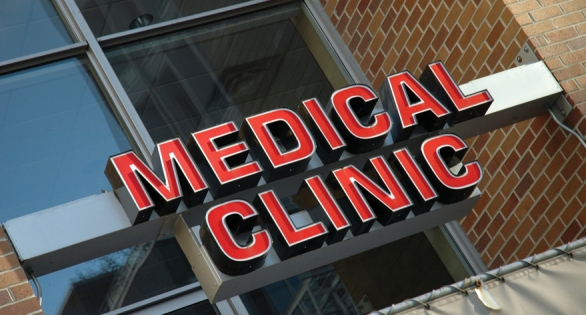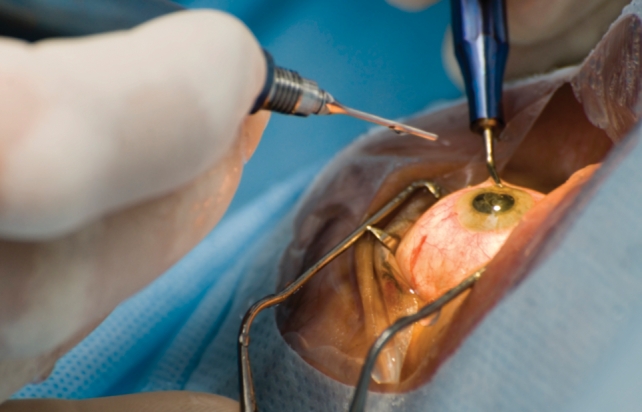Provincial governments and governing medical colleges across Canada are scrambling to regulate and monitor private medical facilities as anxious patients languishing on waiting lists look outside the public system for health services.
Despite the seemingly increasing number of privately owned and operated health care facilities, only 2 provinces — Alberta and British Columbia — employ comprehensive regulatory and monitoring regimes. Several other provinces, including Ontario, Quebec and Nova Scotia, are working on similar systems.
Zoltan Nagy, president of the Canadian Independent Medical Clinics Association says “There is definitely a need [for regulation]. Our interest is to raise standards all over Canada where there are private operators. The higher the standards, the better off the entire system.”
Public health care advocates, who are skeptical of the ability of private facilities to provide the same quality of care as public hospitals, are also calling for oversight of these facilities, both to ensure quality of care and compliance with the Canada Health Act.
“We need to put in place professional standards for these facilities,” says Michael McBane, national coordinator for the Canadian Health Coalition. “Right now, we don't have any idea what the provinces are doing with privatized health care because they just don't report.”
The coalition notes that in the recent Annual Report on the Canada Health Act 2006–2007, most provinces where private medical clinics have been integrated into the delivery of insured health services do not even report the number of facilities involved or the total amount of billings, a situation that has been flagged by the federal auditor general. The upshot is that no one knows the extent to which people are using private facilities or the number of such facilities.
Some progress has been made on the regulatory front. Several provinces have acknowledged the need, and Alberta and British Columbia have laws in place to license private medical facilities. In both provinces the colleges of physicians and surgeons are on the front line for licensing and monitoring, a model that is being examined in at least 2 other provinces.
In Nova Scotia, Premier Rodney MacDonald has promised to introduce new regulations this year to define the role of, and set standards for privately owned clinics that deliver key publicly insured health care services. The new regulations are expected to become law in this spring's sitting of the legislature.
Dennis Holland, a senior policy director for the Nova Scotia Department of Health, says the province's Health Facilities Licensing Act anticipates a working relationship with the College of Physicians and Surgeons of Nova Scotia. Already responsible for the licensing and regulation of physicians, the college is seen as the best mechanism to ensure quality care in private medical facilities, Holland says. “It will be a joint responsibility. It's the state using the power of law to set up a licensing regime. And the college is there to accredit and monitor.”
A similar approach is being taken in Ontario, where the college of physicians and surgeons is working with government to establish regulations for the oversight of private medical facilities as precursor to a full legislative amendment that would enshrine a comprehensive licensing regime.
The college in Ontario was motivated, in part, by recent concerns about the number of unqualified physicians performing invasive cosmetic surgical procedures in private facilities. In September 2007, a Toronto woman died following liposuction in a private facility.
Ontario has also seen a proliferation of alternative private medical facilities, such as “executive health clinics,” that offer enhanced physical examinations and wellness counseling. At La Vie Executive Health Clinic in suburban Ottawa, patients who are willing to pay a $1200 fee receive a 5-hour physical examination, that includes an electrocardiogram, and a consultation with a nutritionist.
College of Physicians and Surgeons of Ontario spokesperson Kathryn Clarke says the lack of a licensing and monitoring mechanism for private medical facilities is a legal blind spot that has existed for too long in many provinces. In large part, the blind spot resulted from the fact that provinces, which normally oversee public medical facilities, did not see it as their responsibility to monitor facilities where uninsured medical services were provided.
The college has proposed regulations that would give it the legal power to inspect, monitor and, if necessary, close down private medical facilities that do not meet standards of care. Ultimately, however, a legislative amendment will be needed to establish the Ontario college as the licensing body for all private medical facilities, Clarke says.
It will be a big job; the college has identified more than 600 clinics or offices in Ontario that provide invasive procedures. “Right now we don't have the authority to approve a facility before it opens and we don't have the authority to shut it down if there are problems,” Clarke says. “If we have concerns about the way a doctor is practising, we can take action. But we need to be able to deal with the facilities as well.”
In Quebec, the provincial government has not yet enacted a regulatory and licensing regime despite the fact that Quebecer's appetite for private health care has grown considerably since 2005 when the Supreme Court of Canada ruled that it was illegal to ban private health insurance for procedures performed in the public system. The Chaoulli decision, named after the Quebec physician who launched the challenge, prompted the Quebec government to introduce Bill 33. Among its many provisions, the new law allowed Quebecers to use private health insurance to pay for hip and knee replacements, and cataract surgery in private facilities.
Bill 33 also contained provisions for licensing and regulating private clinics, but specific measures are not yet in place, nor has the province identified who will do the assessments of private facilities: government, the provincial college or a third party. However, because Bill 33 has been enacted, private medical facilities have started offering services without the regulatory mechanisms and with no opposition from the provincial government.
“The private operators are taking advantage of a real grey zone,” says Marie-Claude Premont, a professor of law at the Université du Québec and an expert on the post-Chaoulli legal environment. “Out-of-hospital surgery is relatively new. It has really emerged over the past decade and the regulations have not kept up. Now, the government is trying to play catch-up.”
Despite this regulatory void, Quebec hospitals have been turning to private medical facilities to help manage waiting lists. Under Bill 33, any hospital that does not meet wait-list reduction targets faces a reduction in provincial funding.
These new public-private partnership got off to a rocky start. The Hôpital du Sacré-Coeur de Montréal made headlines in January 2007 when it announced it had reached an agreement with Rockland MD Clinic, a privately owned surgical facility, to perform 300 elective surgeries. Under the terms of the 6-month contract, Sacré-Coeur would pay $600 per procedure to “rent” Rockland operating theatres, where surgeons from the hospital would operate with nurses from the clinic. Hospital management says it was forced to perform these insured procedures in a private setting because of a severe nursing shortage at Sacré-Coeur.
However, in the very first surgery at the centre on Feb. 6, 2007, a nurse mistakenly administered a potentially lethal dose of painkiller intravenously, rather than as an intramuscular injection. The patient suffered a massive decrease in blood pressure and had to be taken by ambulance back to Sacré-Coeur for emergency treatment. Despite this incident, the Quebec government said that at least 5 other hospitals in the province are negotiating similar contracts to access operating theatres and staff at private clinics.
Although the owners of private medical facilities agree there should be additional oversight, the Canadian Independent Medical Clinics Association does not agree that oversight should come from either medical colleges or provincial governments. Nagy says the colleges tend to be inflexible and arbitrary in their assessment of private facilities, and often make it impossible to add new procedures to their licenses.
Nagy says his association is promoting the idea that all private facilities be accredited by the Canadian Council on Health Services Accreditation, a private body that currently provides assessment and accreditation services to major hospitals in almost every province. Nagy says the Canadian Council on Health Services Accreditation is currently developing a specialized accreditation mechanism to take into account the nuances of a privately owned facility, and hopes to make this available to private facilities sometime this year.
“We would like to see a national system that applies in every province,” Nagy says. “Right now, it's all over the map. The most important point here is that no private facility wants to end up on the front page with a story about problems about the standard of care they're offering. They know that would be the end of their facility.” — Dan Lett, Winnipeg, Man.

Figure. Private clinic operators and watchdogs agree that clinics need to be regulated and monitored, yet only 2 provinces currently do so. Image by: iStockphoto.com/zilli

Figure. Private clinics in Canada are offering everything from cataract surgery to liposuction, hip and knee replacement to “executive” health care. Image by: iStockphoto.com/Wayne Stadler


